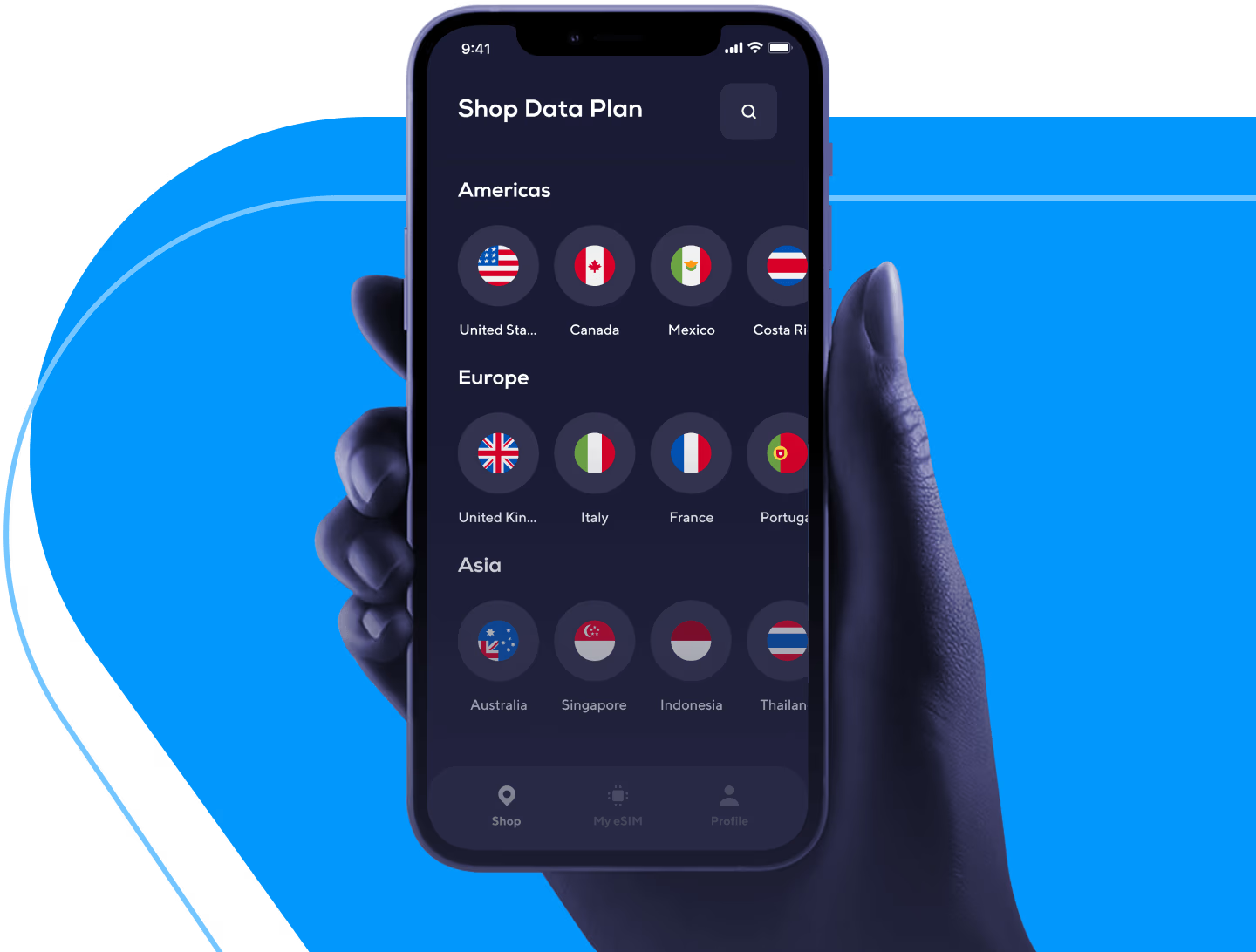
Why eSIMs Are Taking Over Global Roaming in 2026
If you’ve traveled in the last couple of years, you’ve probably noticed something: roaming is finally being disrupted—and not by mobile operators, but by a tiny piece of tech that isn’t even physical anymore. Yep, we’re talking about eSIM ‘s, the quiet little upgrade that’s turning the entire roaming industry upside down. eSIM global roaming
The funny part? Most travelers still think eSIM is just a “newer version of a SIM card.”
But the industry knows better. Behind the scenes, eSIM is reshaping global connectivity, rewriting distribution models, and forcing operators—some reluctantly—to rethink everything from pricing to customer experience.
Let’s break down why eSIMs are the future of global roaming and who is already winning this race.
Roaming Has Always Been… A Mess
Before we get into the shiny stuff, let’s be honest about what eSIMs are disrupting.
Travel roaming was basically built around three pillars:
- Confusion—You never knew how much it would cost until your bill arrived.
- Inconvenience—queue at the airport kiosk, find scissors for your SIM tray, or swap your main number and pray nothing breaks.
- Overpricing—and not by accident. Operators relied on travelers panicking and choosing the “I’ll just use my phone normally” option.
For years, the entire system depended on friction: the harder it was to switch, the more likely you were to accept whatever your home operator charged.
Then came eSIM—and friction disappeared.
eSIM Flipped the Power Dynamic Overnight
Suddenly:
- No plastic cards.
- No hunting for kiosks.
- No switching your WhatsApp number.
- No overpriced €8/MB “accidental roaming.”
Travelers could scan a QR code, download a plan, and get data instantly—even before boarding the plane.
The biggest shift? Choice moved from operators to consumers.
And once you give travelers a choice, they don’t forget it.
But Here’s the Real Magic: scale.
eSIMs aren’t just convenient—they’re scalable in a way physical SIMs never could be.
A physical SIM requires manufacturing, logistics, distribution, storage, and retail.
An eSIM requires… a good landing page and a smart provisioning backend.
That’s why you now see:
- Dozens of digital-first travel eSIM brands
- Airlines and OTA platforms selling eSIMs
- Hotels offering eSIMs as “amenities”
- Fintechs bundling eSIMs with premium accounts
- Airports launching their own eSIM storefronts
- Even influencers selling eSIMs from their Instagram bio
eSIM essentially turned roaming into a digital product anyone can distribute.
This is the same shift that turned hotels into “inventory you can book anywhere” — and we all know how that ended.
Operators Can’t Outrun This (Even If They Try)
Let’s be honest, MNOs didn’t love the rise of eSIM travel apps. Why would they?
For decades, they owned the entire roaming relationship. Suddenly, a traveler could buy a plan from a company they’d never heard of — and it would probably be cheaper, simpler, and with better support.
But operators also know resistance is pointless.
When Apple removed the SIM tray in the US, the message was clear: eSIM is not a trend; it’s the standard.
So what did operators do?
Some doubled down on trying to “protect roaming revenue.”
Others quietly partnered with eSIM sellers to get indirect revenue.
And a few smart ones launched their own global travel eSIM products—because they saw what was coming.
Spoiler: the smart ones are already winning.
The Real Winners of the eSIM Boom (So Far)
Let’s call it like it is: not all eSIM companies are equal. Some are building real networks and infrastructure; others are basically Shopify stores with an API connection.
But a few groups stand out as early winners.
1. Digital-First Travel eSIM Brands
These are the companies that travelers think of first—and for good reason. They’re fast, transparent, and built around UX, not telecom bureaucracy.
Brands in this category typically win because:
- They market aggressively
- They have great apps
- Their onboarding is stupidly simple
- They focus on travelers, not “subscribers”
This group created the entire consumer eSIM movement.
2. B2B Platforms
Behind every eSIM store, there’s a backend platform powering it. These platforms enable:
- Global coverage in 200+ countries
- Wholesale rates and roaming agreements
- White-label storefronts
- Enterprise APIs for airlines, OTAs, fintechs, and even retail chains
This is where a huge part of the future revenue will sit—because as more brands want to sell eSIMs, they’ll need infrastructure partners.
3. Airlines & Travel Platforms
These players already have the perfect audience.
Imagine: a traveler books a flight and immediately sees a “Get your travel eSIM—€7 for 5GB” option. Instant conversion.
Airlines have distribution.
eSIM providers provide the product.
Everyone wins.
I expect airlines to become one of the biggest eSIM distributors in the next 3–5 years.
4. The Operators Who Adapted Early
A few operators realized they could either lose roaming revenue… or reinvent it.
These are the carriers launching:
- Global travel eSIM apps
- Pay-as-you-go data packs
- Multi-country bundles
- Tourist eSIMs integrated with airport Wi-Fi and loyalty programs
These are the MNOs that will survive the shift—and maybe even dominate it.
The Next Phase: eSIM Goes Invisible
Right now, travelers consciously choose their eSIM.
But the real future? Automatic connectivity.
Within a few years, we’ll see:
- Phones that auto-select the cheapest available network in real time
- Apps that recommend the best eSIM the moment you open your boarding pass
- Bundled eSIMs in hotels, tours, local experiences, subscriptions, and even credit cards
- Operator switching is happening in the background without you noticing
Roaming won’t be something you “decide” anymore.
It will simply work—and for a reasonable price.
This is where eSIM becomes less a product and more an infrastructure layer.
So who will win long-term?
The winners will be the companies that understand two things:
1. Travelers value convenience more than anything.
If activation takes more than 20 seconds, they’ll bounce.
2. The future of eSIM isn’t selling data—it’s owning the relationship.
Distribution will matter more than pricing.
The most powerful players will be those who sit at the intersection of:
- Real telecom infrastructure
- A travel-focused user experience
- A massive distribution channel (airlines, OTAs, fintechs, hospitality)
That combination is hard to beat.
Final Thoughts: eSIM Isn’t “The Future”—It’s the Present
The roaming industry has been waiting for disruption for over two decades.
It finally arrived—quietly, digitally, and without the plastic.
eSIMs aren’t just the future of roaming. They’re the first genuine traveler-first connectivity model we’ve ever had.
And yes, the race is already happening. Some players are sprinting ahead, some are catching up, and some still don’t realize the starting gun went off years ago.
But one thing is certain:
The traveler has already chosen the winner—and it’s not roaming as we used to know it.













